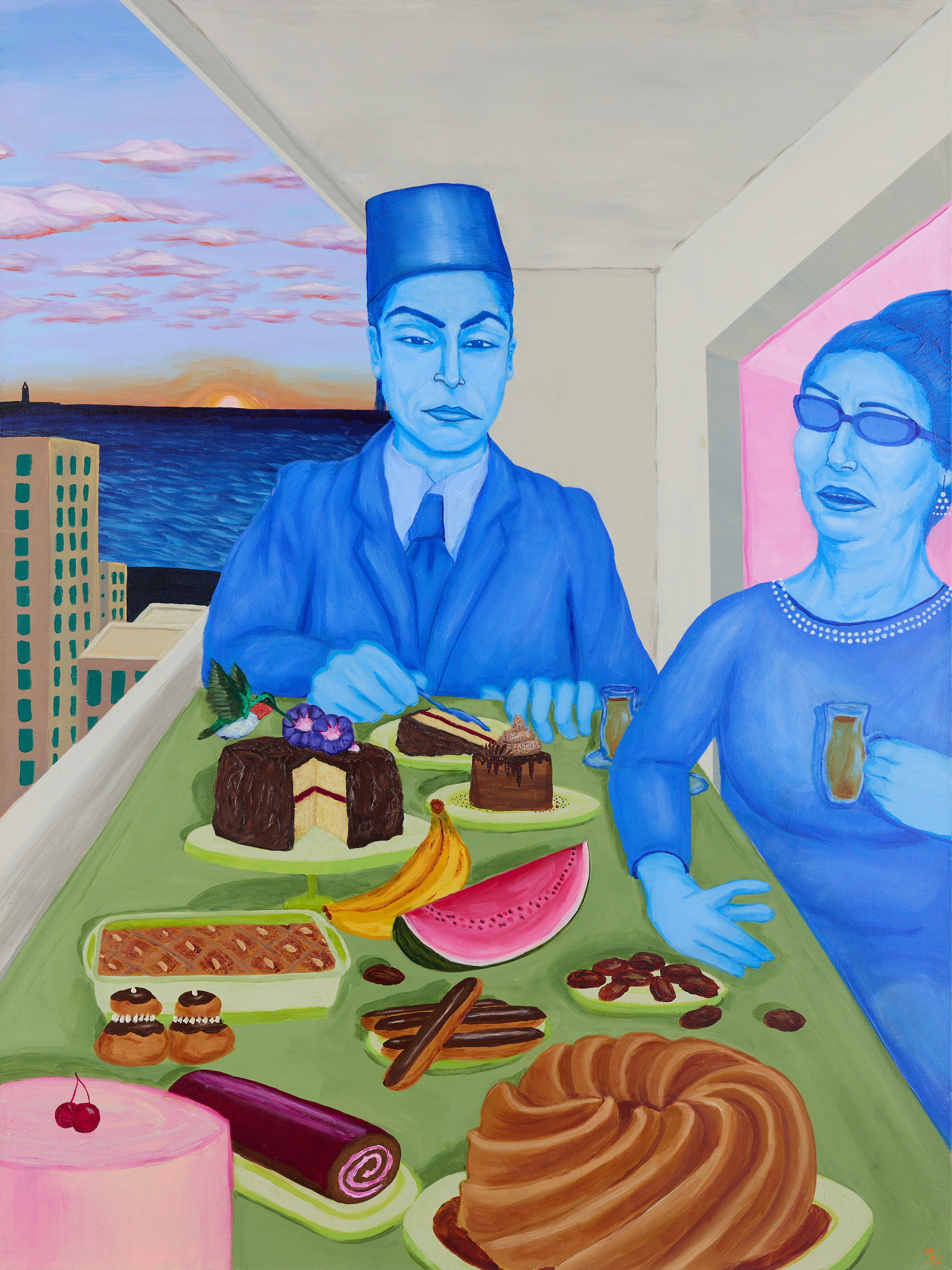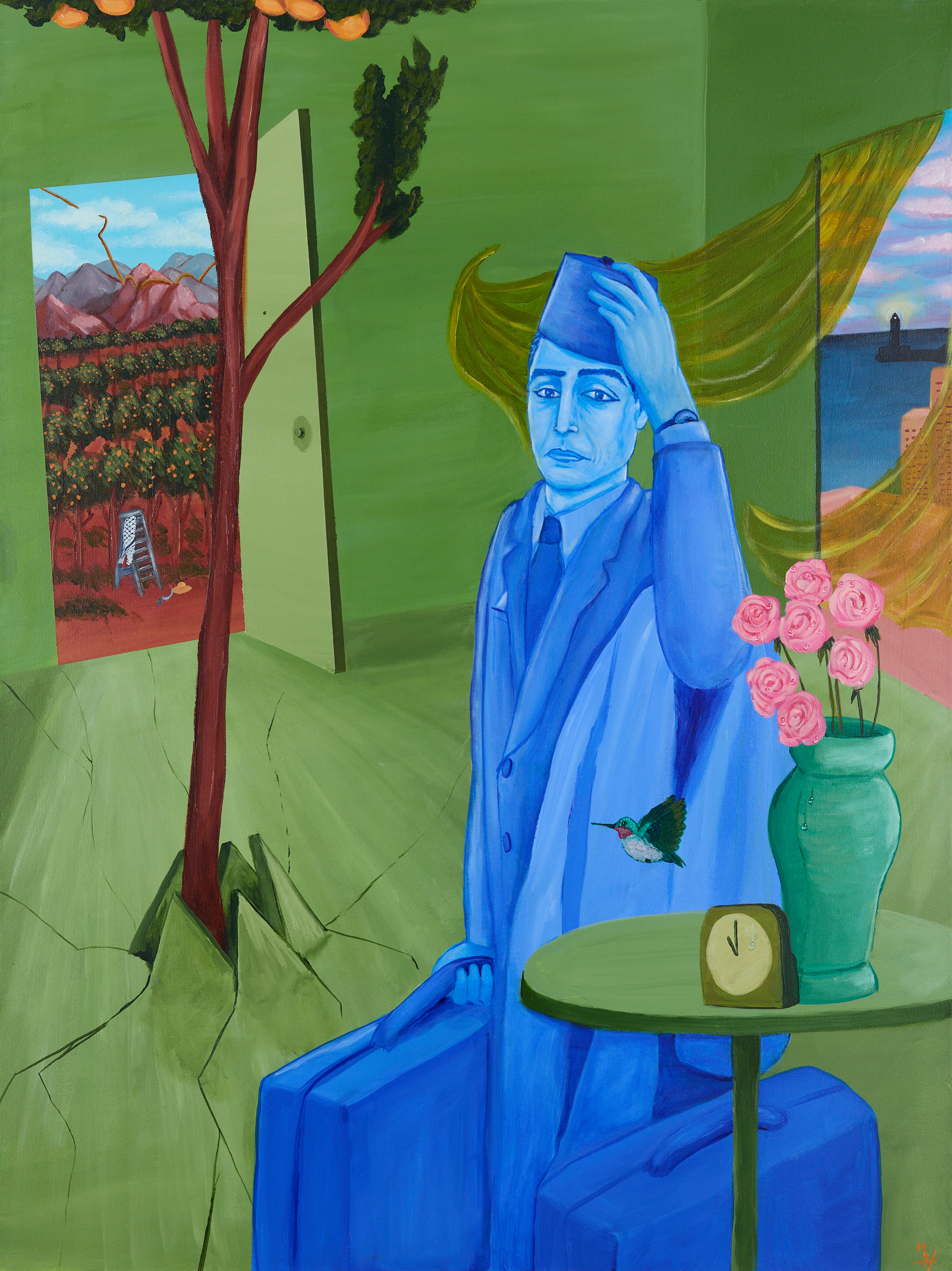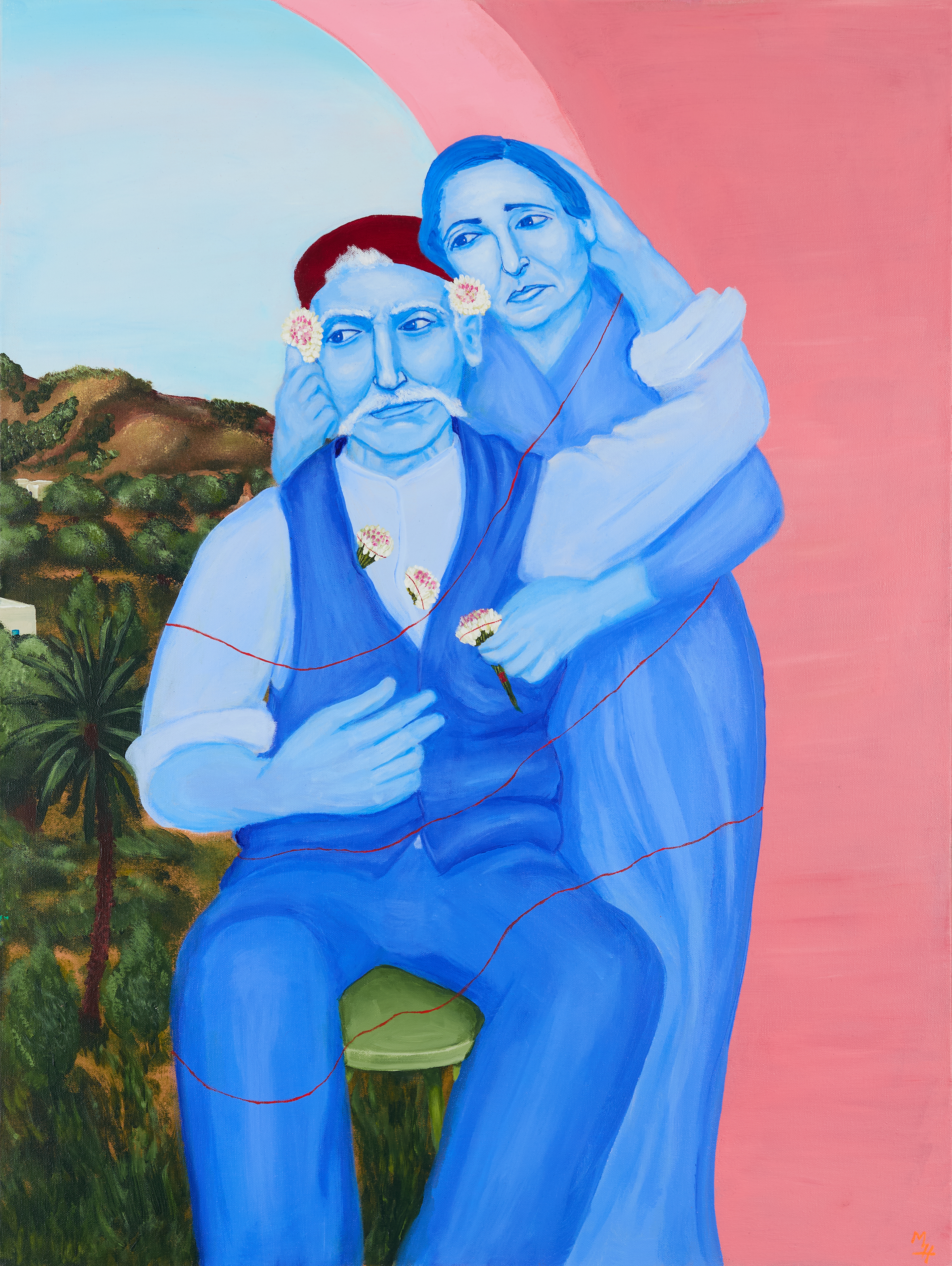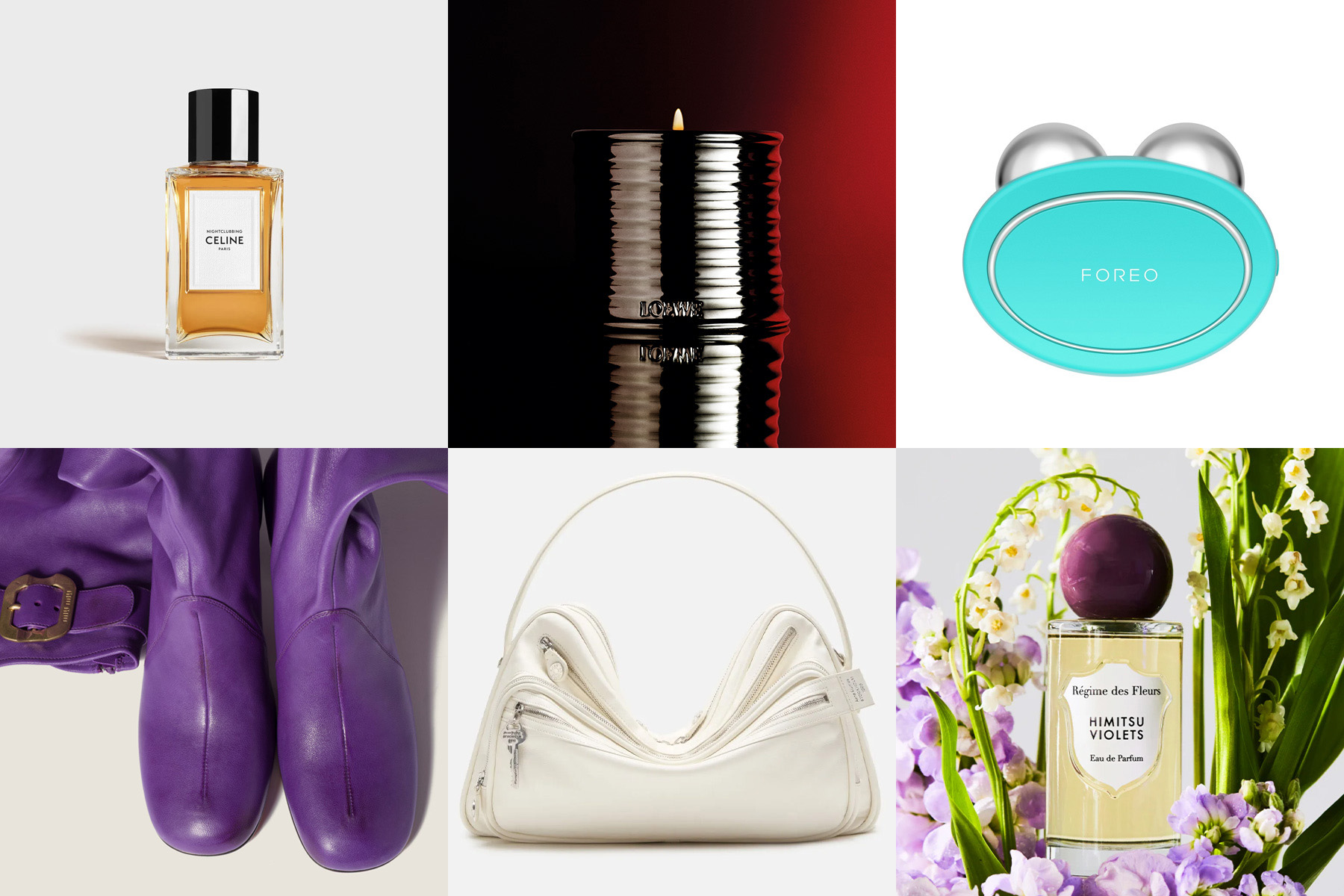Journalist-turned-artist Massoud Hayoun considers systems of control in ‘Stateless’
Hayoun’s new solo show at London’s Larkin Durey, considers his rich and eclectic heritage, and his desire to make the world ‘a little more humane’

‘I hope that people who are a lot smarter and more powerful than me see these paintings and think there are people who are actively thinking about how the world could be a little more loving and a little more humane than it is right now,’ says the painter Massoud Hayoun.
The Los Angeles-based artist and award-winning author will present a new body of work, continuing his investigation of systems of control, in a solo show titled ‘Stateless’ at London’s Larkin Durey, 6-27 June, its opening coinciding with the London Gallery Weekend 2025.
Drawing from his experiences as a Jewish and Arab man with Egyptian, Moroccan and Tunisian heritage, Hayoun explores themes such as identity, marginalised histories, colonisation and power systems in his work. In early May 2025, his paintings were shown for the first time in New York at the 1-54 Contemporary African Art Fair.
Hayoun spoke with Wallpaper* before his new show's opening in London. This interview has been edited and condensed.

Massoud Hayoun, Alexandria, Momentarily, 2024
Wallpaper*: What’s the thinking behind the title of your show?
Massoud Hayoun: ‘Stateless’ is named after a painting where I depict my grandfather, who raised me. He ended up leaving his country, Egypt. I was thinking a lot about migrants because of the new Donald Trump administration and the talk of what's happening with undocumented people in the United States. And thinking a lot about what's happening to people in Palestine with talks of further displacing the Gazan people amid the ongoing genocide there. I was thinking about the idea of citizenship, how it's so malleable, kind of porous, and how you can lose it in one fell swoop if you are from a number of countries where things are made less certain by the kind of global structures.
So ‘Stateless’ started with ideas of citizenship and the nation-state, but in the context of this show, it’s used in all its possible definitions. There's a woman who's upside down who represents some of the political issues faced by women in the United States right now and feminine people, particularly regarding reproductive rights. In that particular painting, she's a witch with a wand, and the wand is actually an abortion instrument because there are women in our country in the United States who are dying these days because they don't have access to reproductive health care.
Receive our daily digest of inspiration, escapism and design stories from around the world direct to your inbox.

Massoud Hayoun, Life's Nectar, 2024
W*: When did your investigation of systems of control start and why is it necessary to address this issue?
MH: I was a journalist for Al Jazeera for a long time, and then I wrote a book with my grandmother about colonial politics, specifically North Africa. I looked at many policy documents that decided what kind of social changes would need to happen in North African society for France and Britain to further their colonial footprint in the region. [I realised] that many of the ways my grandparents were when raising me were actually decided for them by people very far away across the Mediterranean. Down to very small details about how much they identified with their own native language, how they dressed, how they ate, was all decided for them by policymakers who had never met them and all for the purpose of serving a kind of political goal.
And that made me question a lot of how I am and how I view myself and how I view gender and how I interact with women as a man who's more or less feminine, and how I interact with the rest of the world as somebody who is American of Arab origin and North African origin, born in the United States, and trying to understand the kind of neo-colonial dynamic between the United States and the rest of the world. The investigation of systems of control is a kind of an unbraiding of all of these things that we're taught in school as just normal things about how we are and our personalities that are actually decided for us by policymakers, and how they suit very specific political ends that end up killing and dispossessing people around the world.

Massoud Hayoun Stateless • Por no llevar papel, 2024
‘There is the hope that people who are from my family's homelands or the region or the continent will look at these paintings and find a piece of themselves’
W*: How does Egyptian, Moroccan and Tunisian heritage appear in your work?
MH: I think on a more superficial level; I was raised by my grandparents, so a lot of the movies that we were watching when I was growing up were bootlegged films from their generation, from the kind of heyday of Egyptian films. It's called the beautiful time, and it's the films of the 1950s and 1960s, in which men wore suits [and] fez, and it was the time of genteel manners. And so that time really reminds me of my grandparents.
You'll see that when I depict myself in these paintings, or I depict my grandparents, they're dressed like the people of that generation. And part of that is about making my grandparents immortal. I recently went to the 1 54 Contemporary African Art Fair and was shown together with Lavar Munroe. He told me about how in his art, he uses heirlooms that he received from his grandmother and kind of weaves them into his pieces to make his grandmother who recently passed away, immortal. And that's what I'm doing in these paintings. When I'm talking about Egyptian-ness, Moroccan-ness, and Tunisian-ness, and when I'm talking about the region, the continent, and the Arab peoples, and I'm trying to recall a time when my parents were still around, and so that's very personal.
It sounds like nationalism, and it really isn't. There are so many things that I wish were better about my family's homelands and how they interact with the rest of the continent, the rest of the world, and their own peoples. Still, it's really about spending time with very specific things that remind me of the people who raised me. There is the hope that people who are from my family's homelands or the region or the continent will look at these paintings and find a piece of themselves in it and feel kind of that I've done something to make them have these feelings or share these feelings with them in the way that any type of artist, musical, visual, literary, tries to connect with people.
‘I put pretty much everyone, the people and animals and any living thing in blue to say, these are things that exist in the past tense’
Massoud Hayoun

Massoud Hayoun Uncynical Tunisian love painting, 2024
W*: When and how did blue become a signature colour in your work?
MH: A lot of my work is influenced by film, and I think that this is because I was born in Los Angeles, the centre of Hollywood. My grandfather was from Egypt, that's kind of the Hollywood of the Arab world and North Africa, and I spent a lot of time in Hong Kong, which is that regional Hollywood. So a lot of things throughout these paintings are influenced by cinema.
And once I saw a film where a spirit was in blue with these kinds of highlights and shadows, so to me, this looks like ghosts. And so the blue started because I was depicting my grandparents as ghosts, and this kind of blue with highlights made them look ghostly to me. And then – because I try to make colour mean something in the way that in poetry, every single last word, comma, and detail needs to mean something – I put pretty much everyone, the people and animals and any living thing in blue to say, these are things that exist in the past tense. Of course, art will exist indefinitely, especially now that we can digitise everything.
But when I depict myself or my grandparents, I'm depicting something that happened in the past that may not be true in the future. As you know, as a journalist, you're constantly writing in the past tense because what happens one moment might not be true the next moment. So it rings true to me that everyone should be ghostly.
‘Stateless’ opens 6 June and will be on view at Larkin Durey in London through 27 June 2025, larkindurey.com
-
 Wallpaper* Gift Guides: What beauty editor Mary Cleary has on her wishlist
Wallpaper* Gift Guides: What beauty editor Mary Cleary has on her wishlistWallpaper* contributing beauty editor Mary Cleary shares the items she is hoping to unwrap this holiday season – from transporting fragrances to a must-have skincare device
-
 A Dutch visitor centre echoes the ‘rising and turning’ of the Wadden Sea
A Dutch visitor centre echoes the ‘rising and turning’ of the Wadden SeaThe second instalment in Dorte Mandrup’s Wadden Sea trilogy, this visitor centre and scientific hub draws inspiration from the endless cycle of the tide
-
 Hyundai is the latest car company to get into robotics: meet the Mobile Eccentric Droid
Hyundai is the latest car company to get into robotics: meet the Mobile Eccentric DroidThe MobED is a new product from Hyundai’s Robotics LAB, pitched at last-mile delivery and industrial applications